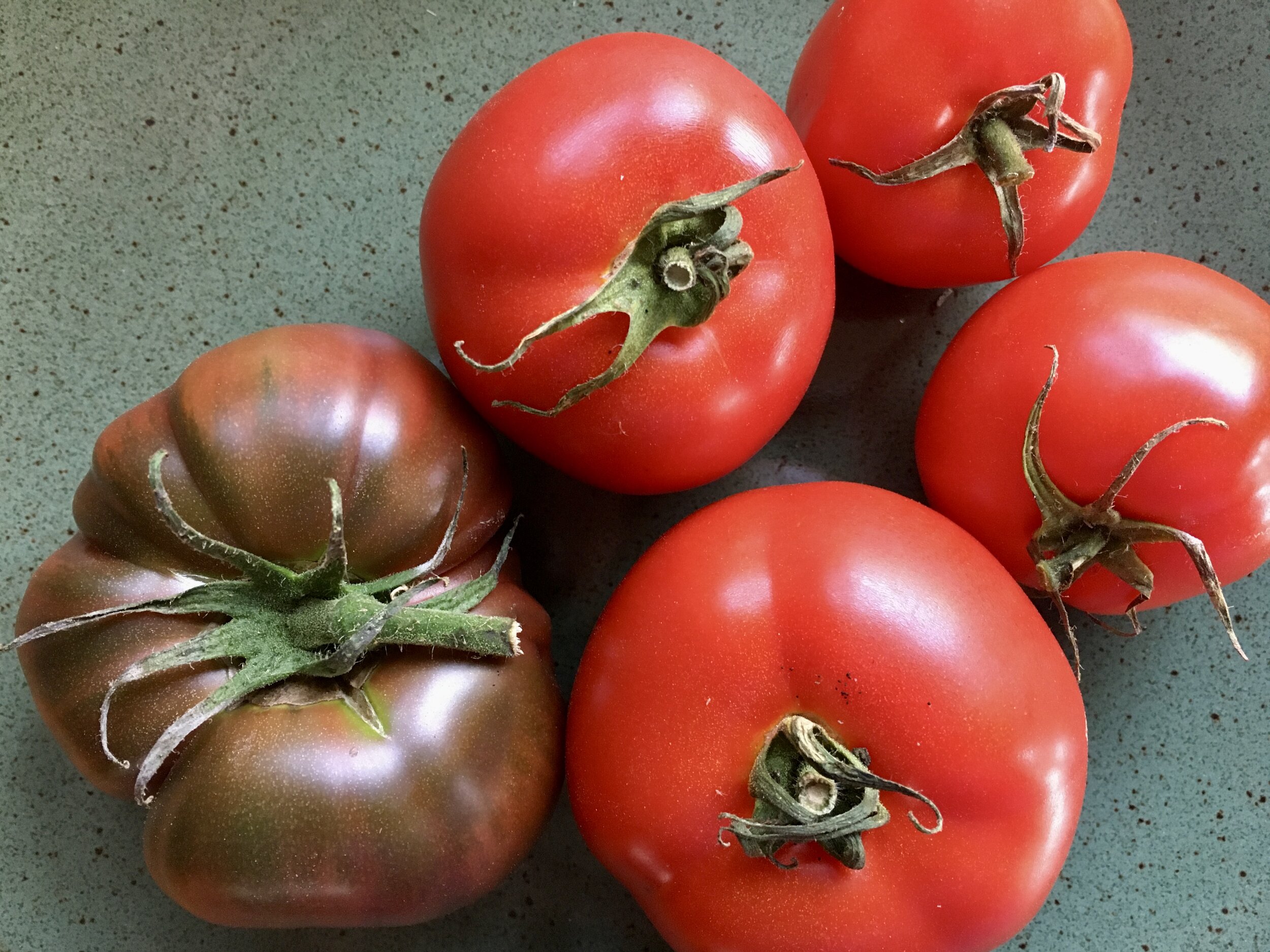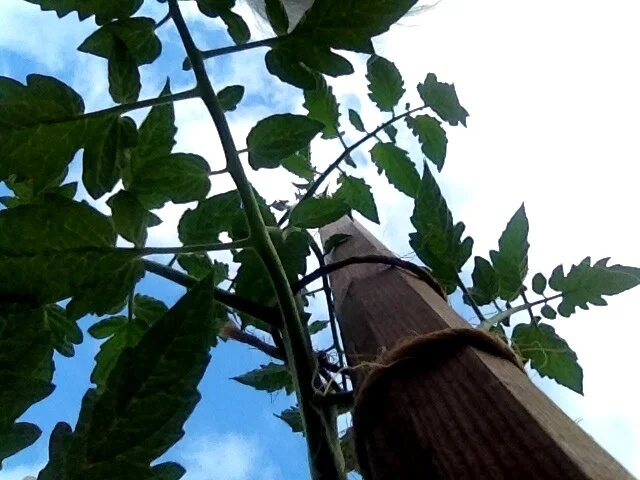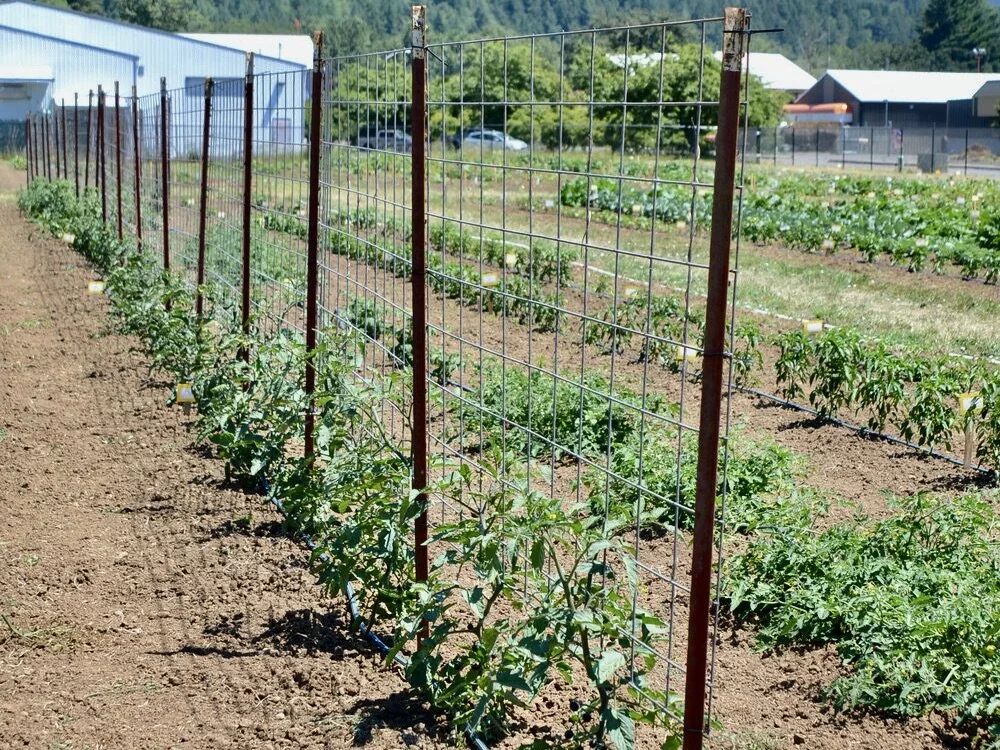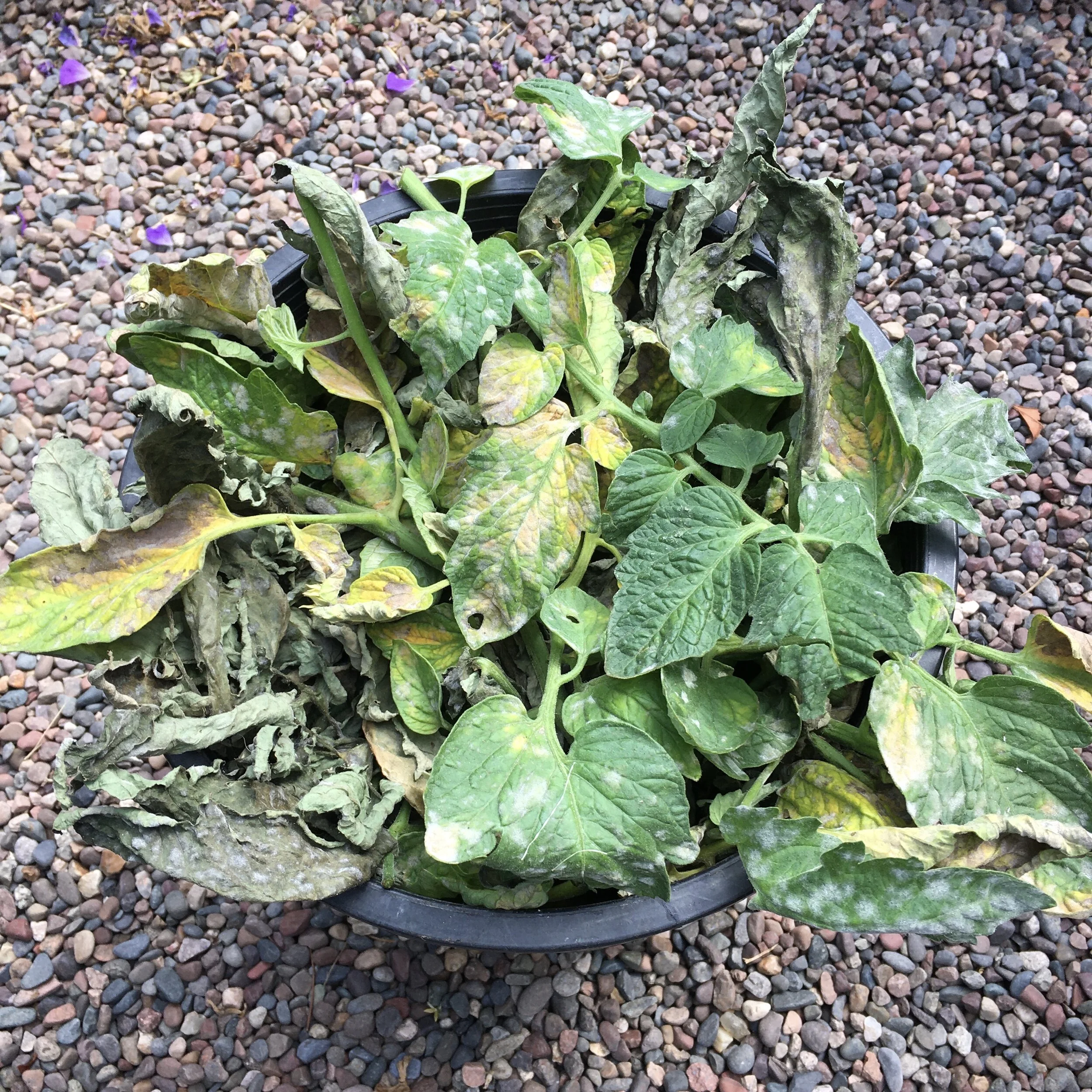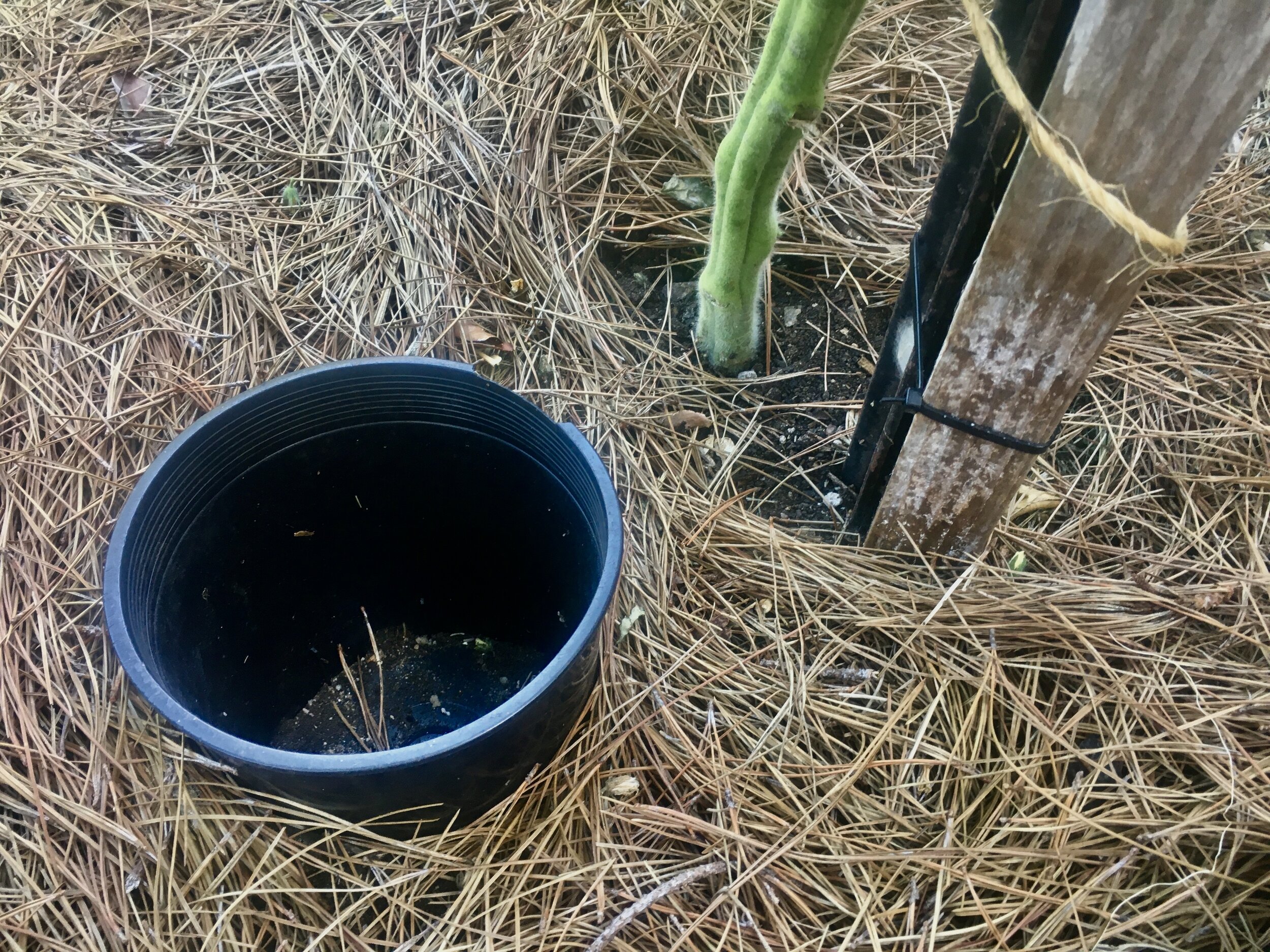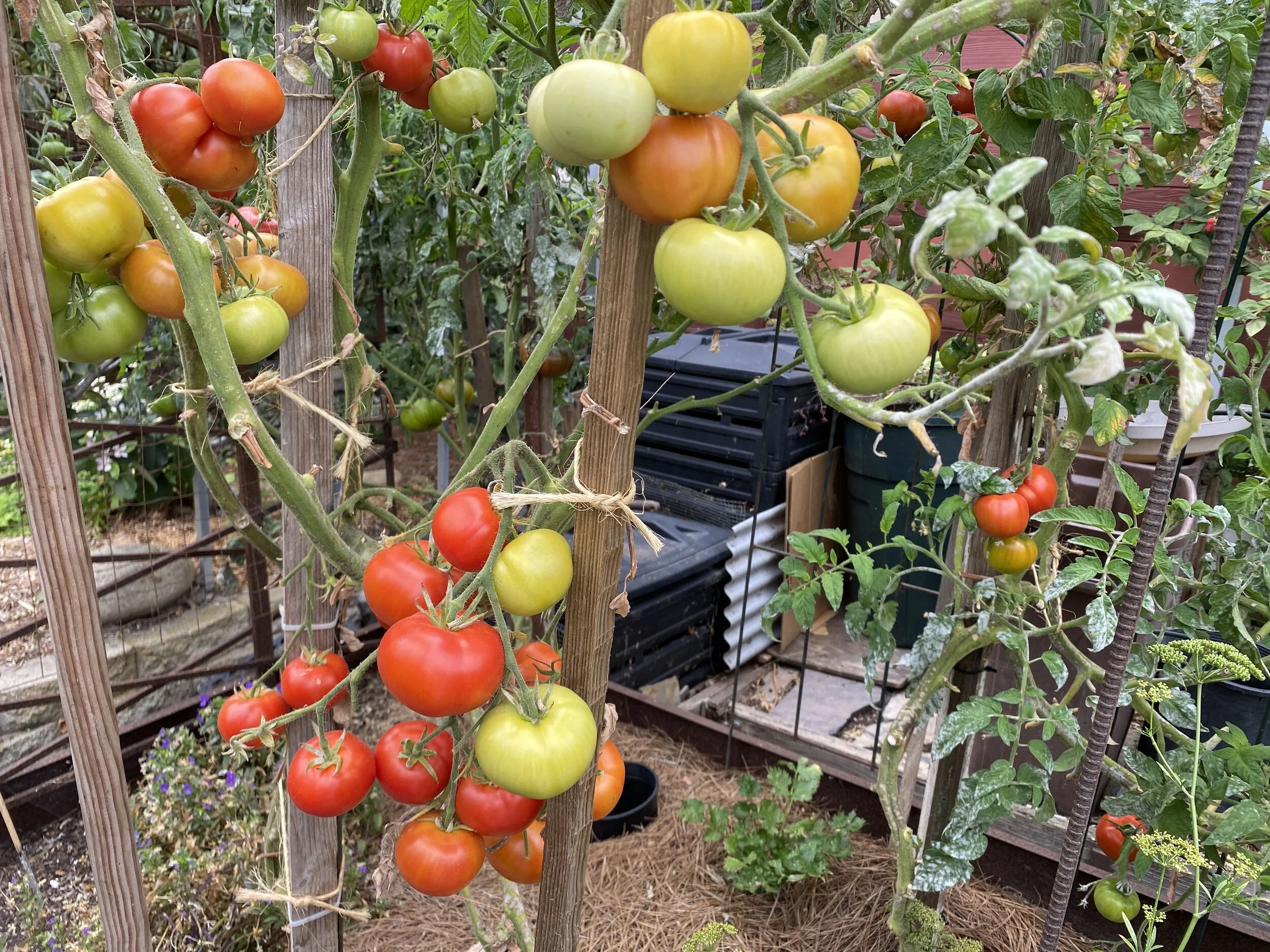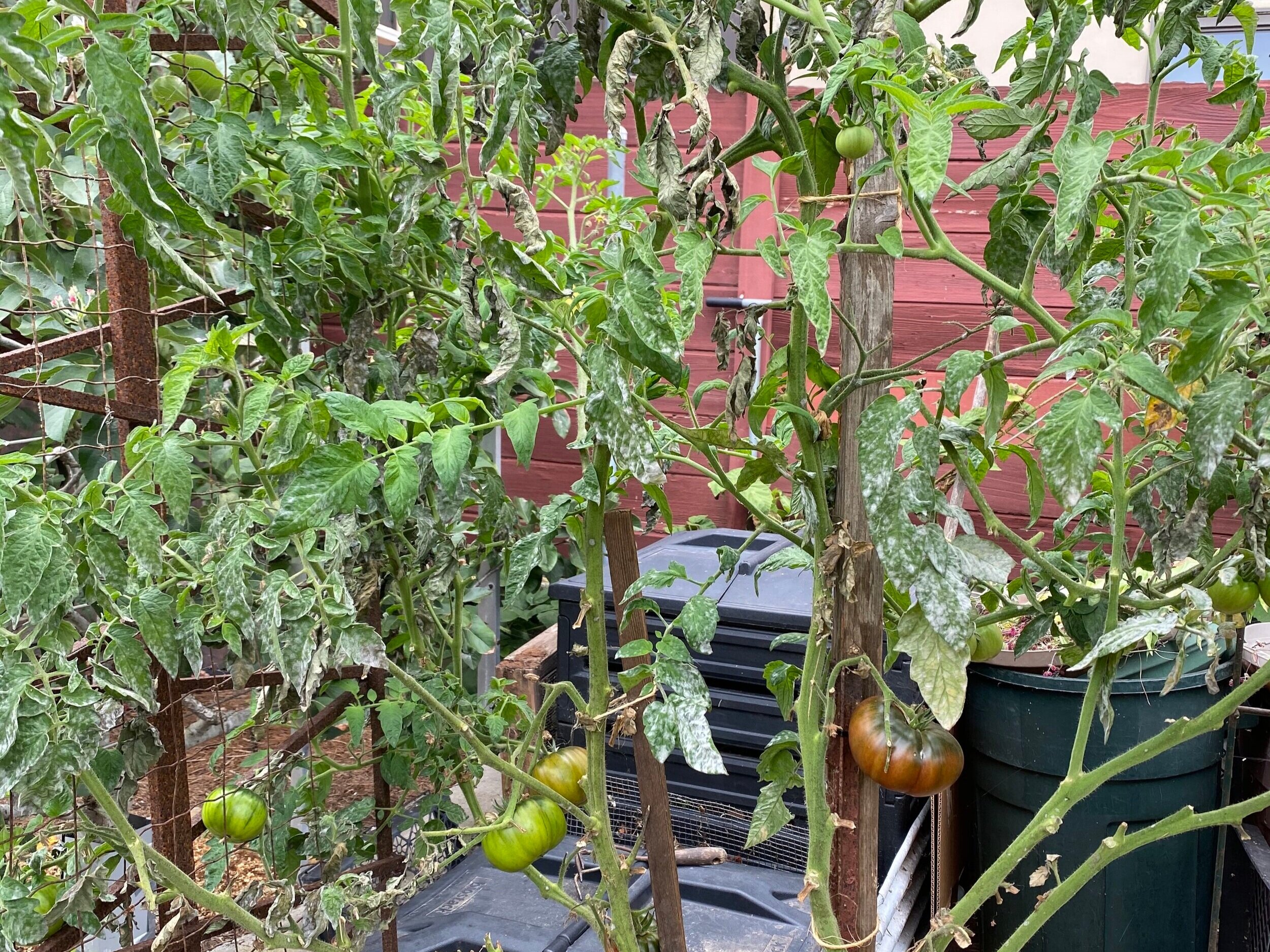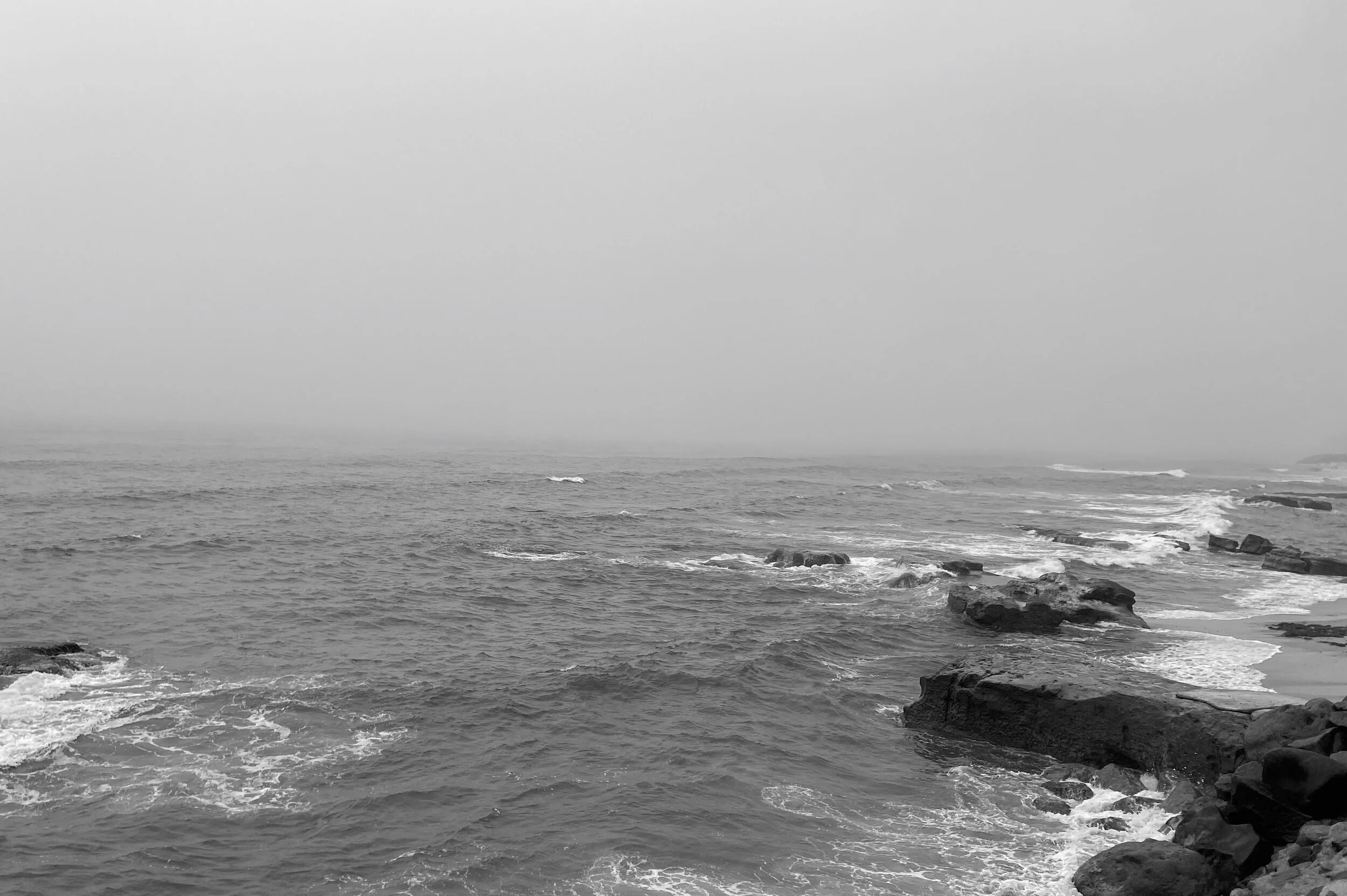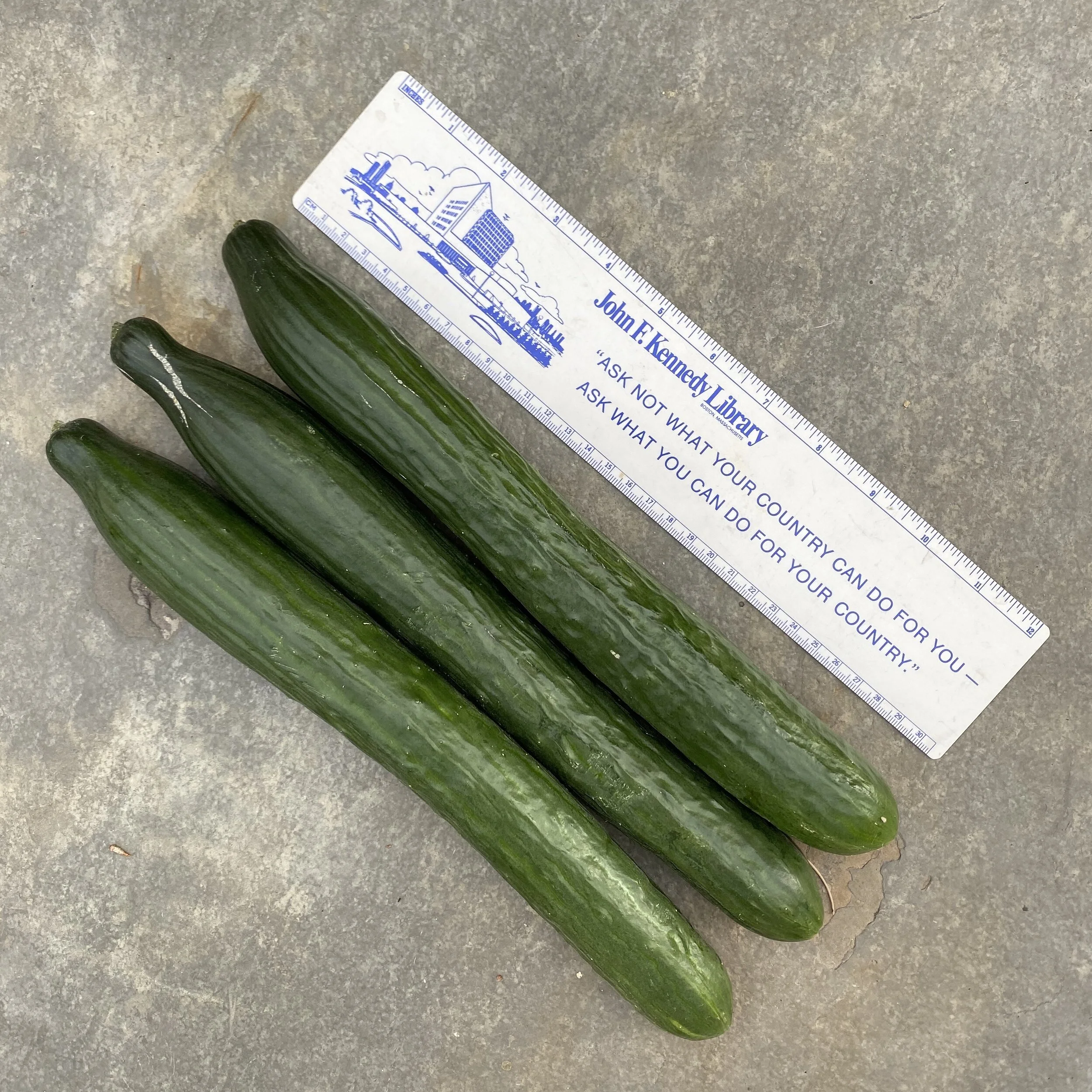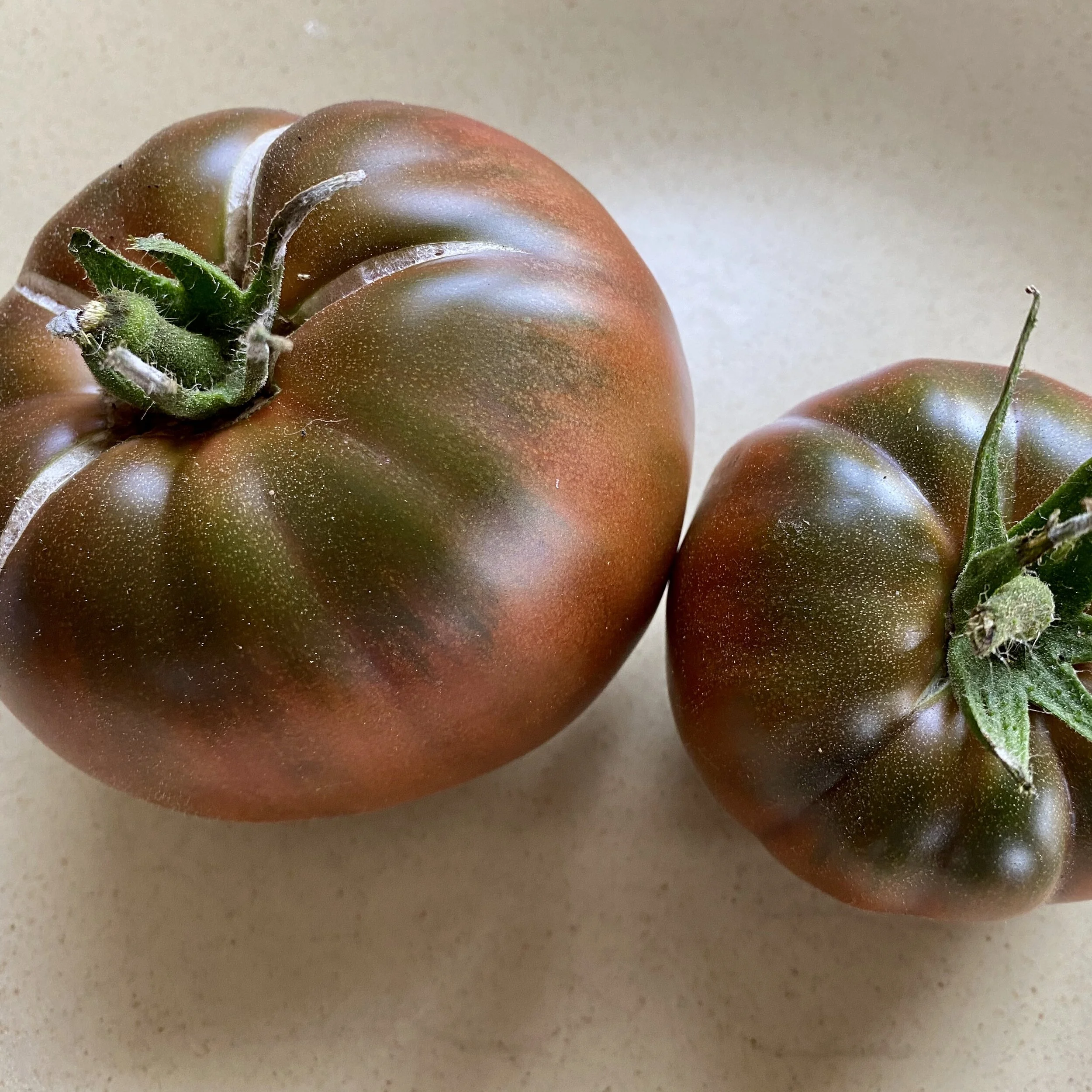Growing Tomatoes in the Fog Belt
I’ve grown tomatoes in my coastal garden with varied success for over twenty-five years. Two blocks from the Pacific Ocean—that’s Sunset Climate Zone 24 and USDA Zone 10b.
In practical terms, that means we contend with cool temperatures and lots of fog and overcast. When Santa Ana conditions prevail inland with blistering heat, we are usually more comfortable at the coast. We welcome the overcast or fog blanket that may shroud our homes and gardens in the spring and summer. But it does affect the tomatoes.
If you’re trying to grow tomatoes in the fog belt, this post shares some of my experiences and perhaps you can avoid my mistakes. As I write, I’m thinking of some of my favorite coastal locations—Mendocino, Monterey, Pismo Beach, Ventura, Santa Monica, San Clemente.
Some of the variables that affect the bounty of my tomato crop here in the fog belt:
Tomato variety
Generally, early season tomatoes like Early Girl do better in my garden. They tolerate cooler temperatures and produce a flavorful, medium-sized tomato. Heirlooms like Black Krim and Cherokee Purple, my favorite tomatoes, seem less tolerant of my local conditions. But who can resist their finer qualities? So I grow one of them every year.
Black Krim and Early Girl tomatoes
This year I tried San Francisco Fog, an heirloom bred for cooler areas. They are similar to Early Girl but slightly smaller, 2-3 inches and arriving about the same time. Most years I also grow Stupice. This tomato predictably yields small but richly flavored tomatoes. It’s also a cold-tolerant variety originally from the Czech Republic.
My Large Black Cherry tomatoes usually do well here also. I shared my seed with San Diego Seed Company and they now offer that organic tomato seed. One of my neighbors has grown Celebrity successfully. Maybe I’ll try it next summer with local seeds also from San Diego Seed Company.
Other years I succumbed to names like Sub-Arctic Maxi and a tomato purported to be grown in Siberia, trying them in my garden. Various websites and a trusted nursery can guide you to tomato varieties that perform best in your garden. You can also check the list of cool-tolerant tomatoes on the Tomato Dirt website. For a list of The Most Blight Resistant Tomato Varieties, again check the Tomato Dirt website.
Methods of support (cage, stake, trellis)
Air circulation is key to preventing powdery mildew and blight. Too many plants, too close together reduce air circulation. Previously, I planted five tomatoes in a 4 x 8 foot raised bed using wire cages. With several dank summers, I reduced that to four in cages, which is still probably too close for caged tomatoes.
Tomatoes growing up a sturdy stake
This year I planted three tomatoes using a modified staking system, pinching out suckers until the plant was about three feet tall. After that, I was less concerned about removing the suckers and provided additional supports for the wandering vines. The production has been good so far even as the leaves go away.
Source: Territorial Seeds
Next year, I may use cattle panels and T posts. When you study tomato growth patterns it is evident why they are sometimes referred to as tomato vines. This method should be easier than tying the plants to stakes. I’ll be weaving and pinching out the suckers as the vines climb the panel with improved air circulation and exposure to sun.
May Gray and June Gloom
Persistent overcast in May and June can extend into July here and it has this year. Unfortunately, there are no solutions for that but I do note that the less overcast we have, the better the tomato plants look as the season progresses.
This year I planted the tomatoes a month earlier, hoping to establish them in the sunnier month of April and give them the longer days around the solstice to grow on. The curious can see the USGS California Fog Maps here. When I see the weather forecast for “partly cloudy” that usually means overcast early and late with sun midday, maybe.
An LA Times piece, The Coastal Gardener: When tomatoes near the end of the vine makes a case for planting tomatoes in August or early September for “fall” tomatoes. The soil and days are warm and plants grow well. Fruit set occurs before cooler autumn nights. Consider the recommended Celebrity, Early Girl and Stupice varieities.
Sun exposure and garden orientation
Choose the sunniest part of your garden to plant the tomatoes and in a location you’ve not grown tomatoes the previous year. In urban gardens we accept the hand we’re dealt. Sometimes the choices are limited and we work with that. The fact remains: tomatoes need 6 to 8 hours of direct sunlight daily to thrive.
My garden is bordered by an imposing two-story house on the east side, only ten feet from my tomatoes. Especially in the winter and shoulder seasons I wait for the sun to rise over the house. I also contend with the trees in neighbor’s yards on the south side which continue to grow and cast enlarging shadows.
Care of tomato plants
As the tomato plants grow, I begin to remove the lowest leaves which develop blight and powdery mildew first. Down low they are shaded and don’t catch the sun and wind to dry them or irrigation water may splash on the lowest leaves. Blight and powdery mildew usually begins low and works up the plant.
Trim the diseased leaves to minimize the spread of blight and powdery mildew. I filled a 15-gallon container with the detritus of three plants, bypassing the compost bin and straight to the city green bin. After the cleanup I watered the plants and fertilized with a liquid fish and seaweed fertilizer.
Irrigating tomatoes in a sunken gallon pot keeps water from splashing on the leaves. Here you can see the lowest tomatoes leaves trimmed up.
Here’s how my tomato plants look in late July. San Francisco Fog is up front and Early Girl to the right. In the lower photo, Black Krim sprawls and climbs a trellis. All three plants are over five feet tall. New growth up high keeps the plants going. I often pick tomatoes a day early to finish ripening on the kitchen counter, leaving more energy for the plant to bring the remaining tomatoes to maturity.
My tomato plants are not enviable but I’ll take whatever I can get in the fog belt.
Sunset Cliffs, at the end of my street, two days after I published “Growing Tomatoes in the Fog Belt.” (August 1)

